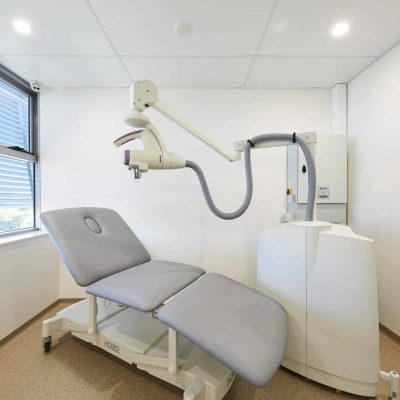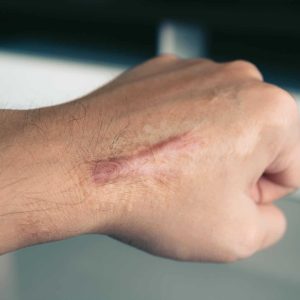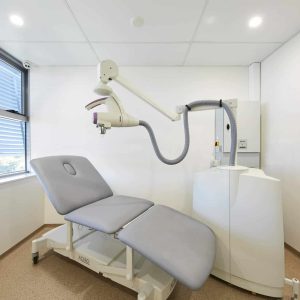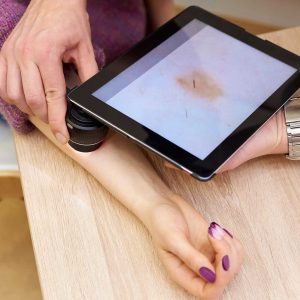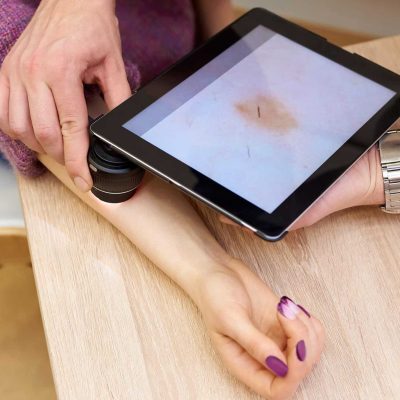What Are Keloids
Keloids are “monster” scars characterised by excessive scar tissue (collagen) formation in response to a wound to the skin. The injury may have been trivial as in acne or a piercing.
Keloids may develop within months to years after the initial injury and are characterised by thick irregular scarring of the skin. The scar may be an unsightly, pink raised lesion and the texture may vary from being soft to firm and rubbery.
These excessive scars are often symptomatic with patients describing discomfort or itching. Keloids often cause distress by their unsightly appearance.
Keloids are not cancerous. They also differ from a hypertrophic scar (oversized scar) in that they extend beyond the site of the original injury, and they do not resolve over time.
There are many treatment options in managing keloids including silicone gel, pressure dressing therapy and steroid injections into the keloid and excision of the keloid. With surgery alone, keloids recur in more than half the number of patients.
SXRT can help to reduce the risk of recurrence to less than 20%.
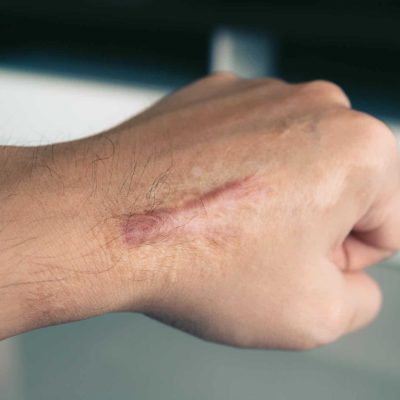
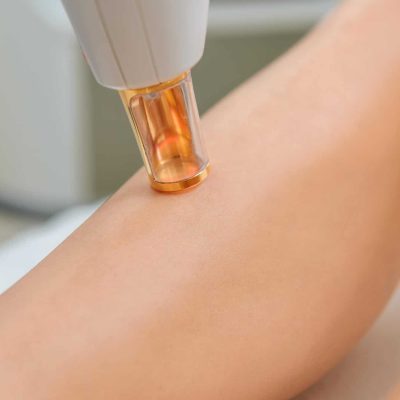
How SXRT can Help
The exact mechanism of keloid formation is poorly understood. After injury a wound recovers by scarring. This is where a normal number of specialised cells, called fibroblasts , migrate into the wound environment and lay down collagen to form a scar. In keloids there are too many fibroblasts which result in too much collagen formation and an unsightly oversized scar.
Radiation helps reduce the risk of keloid formation if it is offered immediately after the injury. It works by reducing the number of fibroblasts and allows for more normalised wound healing.
Where possible the keloids should be surgically removed, and radiation should be offered within 24 hours of the surgery. Surgery followed by radiation reduces the risk of keloid formation to less than 20%.
Sometimes keloids are too large for surgery and then radiation can be used alone.
The Procedure
We use the Royal Marsden Hospital’s treatment protocol where a single treatment of radiation is delivered within 24 hours of surgery.
This requires meticulous planning, and we can help with this. The process is as follows:
- We need a Medicare referral for the first consultation.
- At the first consultation the radiation oncologist will determine the need for treatment and if suitable draft a preliminary radiation plan.
- The radiation oncologist will refer you to a plastic surgeon for a consultation to review the risks and benefits of surgery.
- If applicable, our team will liaise with the surgical team about a suitable day for surgery and superficial X ray therapy.
- You will attend the surgery and then, following this attend the available Just Skin Treatment clinic on the same day as surgery
- Depending on the surgery the preliminary radiation prescription may need to be altered.
- A single treatment of radiation will be delivered to the wound, without removing the dressing.
Radiation is painless. It may result in delayed wound healing – which is the point of the treatment. The specific risks and benefits will be discussed with you at the consultation on day 1.
Routine follow up with the surgeon will occur as planned.
The team at Just Skin will review you 2 weeks after the surgery and then again in 6 months and annually.
